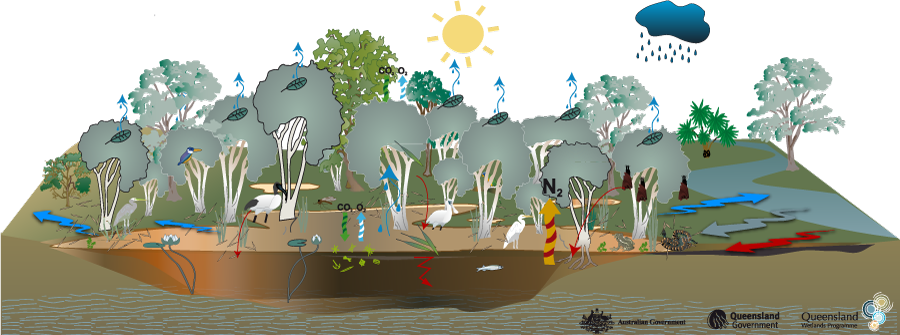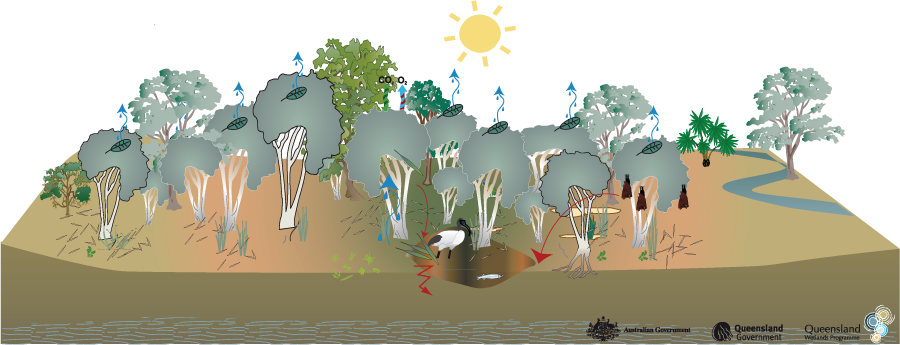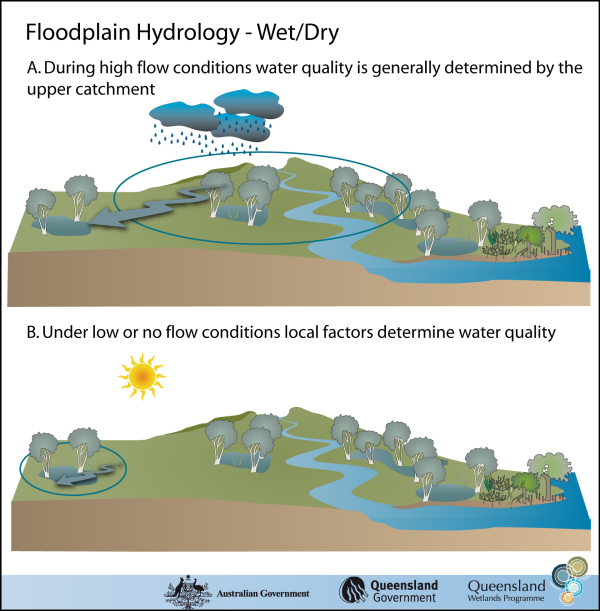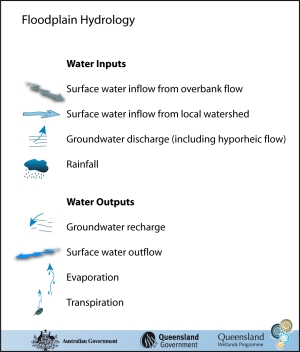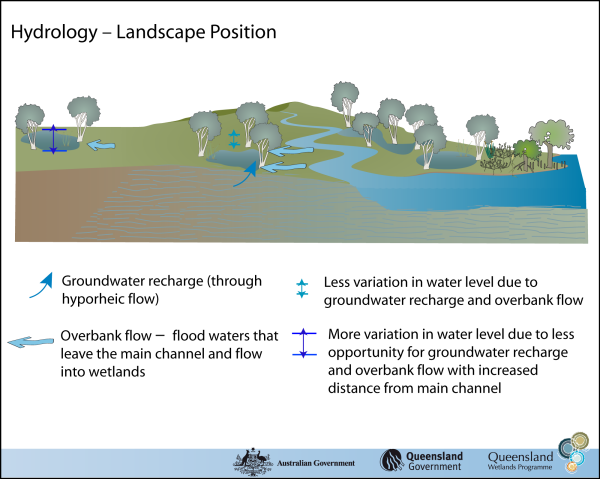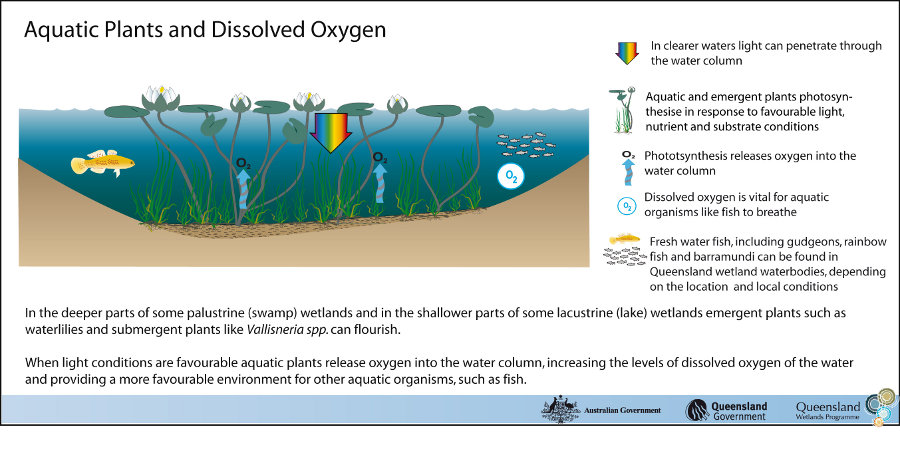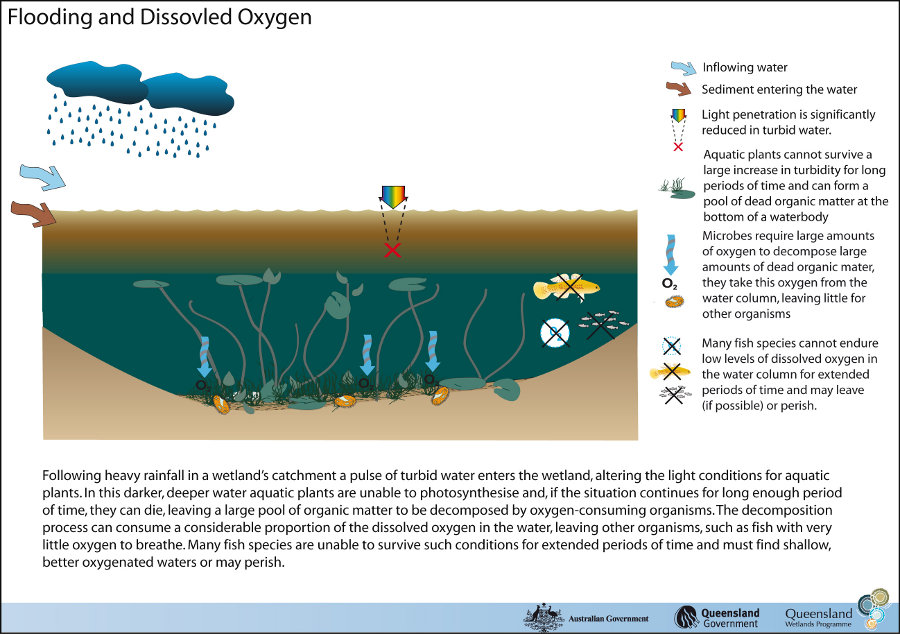|
|
Coastal and subcoastal floodplain tree swamp–Melaleuca spp. and Eucalyptus spp.Coastal and subcoastal floodplain tree swamp–Melaleuca spp. and Eucalyptus spp. – HydrologyClick on elements of the model or select from the tabs below
The hydrology of floodplain tree swamps is related to a site’s topography, substrate type and position within the catchment (see Hydrology—landscape Position). Climatic factors (especially those related to rainfall) also play a significant role in the regularity, seasonality, duration and amount of water entering and leaving the wetland. Water InputsFloodplain wetlands can be flushed with water from overbank flow, streams leading directly to the site, sheet flow across the floodplain, rainfall, run-off from the local watershed, hyporheic flow and other groundwater discharge, or a combination of these sources. If groundwater table levels and substrate permeability permit, this can lead to more constant systems. This wetland habitat type can play a role in groundwater recharge/discharge. An important point to note is that hyporheic flow and groundwater flow tend be clear (not turbid), compared to surface water flow. Water OutputsEvaporation, transpiration and groundwater recharge can lead these systems to dry out, often completely (see dry model). Overbank floods move out onto the floodplain or back to the channel, connecting the wetland habitat to other wetland habitats in the floodplain. Water may also flow out to the ocean via distributary channels, depending on topography. Water Quality
More research is needed to demonstrate the effects these wetland habitats have on the hydrology and water quality of the broader system. It is suspected that the water leaving these wetlands, entering other wetlands or returning to streams would have differences in turbidity, Coloured Dissolved Organic Matter (CDOM), acidity, Dissolved Oxygen (DO), conductivity and organic matter. These effects are complicated and site dependent, and could have an appreciable effect on water quality in downstream waterways. ConnectivityThe inlet and outlet of water flow for these wetland habitats can be different. Drainage points can go back into a creek and/or go in another direction, connecting the wetland to other swamps, lakes, streams, estuaries or the sea, and may even break catchments. Under low or no flow conditions, local factors determine water quality and can act like non-floodplain systems when not hydrologically connected to stream systems. Hydrology and VegetationHydrology can play an important role in influencing the growth and distribution of vegetation communities. Melaleuca trees can be temporarily inundated with water for three to six months of the year. Areas that are inundated for longer periods tend to shift towards grass, sedge, herb-dominated wetlands. In the Wet Tropics coastal lowlands, annual rainfall is high enough (greater than 3000 mm annually) for palm swamps to grow on very wet, poorly drained soils.
Last updated: 22 March 2013 This page should be cited as: Department of Environment, Science and Innovation, Queensland (2013) Coastal and subcoastal floodplain tree swamp–Melaleuca spp. and Eucalyptus spp. – Hydrology, WetlandInfo website, accessed 8 May 2025. Available at: https://wetlandinfo.des.qld.gov.au/wetlands/ecology/aquatic-ecosystems-natural/palustrine/floodplain-tree-swamp/hydrology.html |

 — Department of the Environment, Tourism, Science and Innovation
— Department of the Environment, Tourism, Science and Innovation

